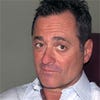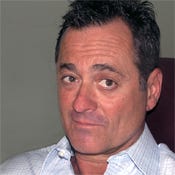Health Wearables Going Big In 2015; Questions LoomHealth Wearables Going Big In 2015; Questions Loom
Tired of your uber-healthy co-workers crowing about their calorie intake and steps at the office? A new wave of health wearables might make you feel better -- if companies can clear the regulatory hurdles.


Mental Health Tools: From Office To Pocket
Mental Health Tools: From Office To Pocket (Click image for larger view and slideshow.)
When it comes to wearables, 2014 will go down as the Year of Fitness. No question about that. And if things go the way that a wide swath of the industry hopes, then 2015 will go down as the Year of Healthcare. But there are many questions -- serious questions -- looming.
Indeed, for all the hardware and software suppliers, healthcare providers, drug makers, financial institutions, and others in the ecosystem now developing apps and devices to help manage care, there's a flock waiting on the sidelines to see whether existing players can navigate a minefield of regulatory obstacles that complicate an otherwise bright future.
Though the path might be muddy, the benefits of wearables for healthcare -- and the corresponding boon to the ecosystem -- are crystal clear. The market for wearables that are designed to manage healthcare has the potential to dwarf fitness with hundreds of billions of dollars in annual sales. The devices make it possible to record all sorts of vital statistics constantly, and physicians can use that stream of data to make quicker, more informed choices for care than they can today with only a few sets of results generated from office visits and bloodwork.
[The need for translation services has never been greater. Read Crowdsourcing Helps Patients, Doctors Speak The Same Language.]
The prospects and pitfalls of wearables for healthcare promise to be the overriding themes of this year's MEMS Executive Congress, an industry gathering that opens Wednesday in Scottsdale, Ariz. MEMS -- micro electromechanical systems -- are chips with built-in circuitry that sense and measure temperature, pressure, light, speed, direction, and other physical characteristics. They enable everything from measuring steps in fitness wearables to the automatic rotation feature in your smartphone.
Some of the early activity in managed care takes advantage of the stable of Fitbit, Jawbone, Samsung, and other wrist-worn fitness devices already available. New devices such as the Microsoft Band and the upcoming Apple Watch are helping as well to blur the line between fitness and health.
{image 1}
Take CareSpan, for example. The four-year-old startup has built an online healthcare service that makes it possible for patients in remote spots to get access to doctors for both emergency and chronic care. CareSpan is getting early traction at spots such as mining camps and Native American reservations.
Other startups are making healthcare-first devices. Three-year-old Sensoria plans to roll out in 2015 smart socks and other sensor-equipped clothing for both fitness and healthcare applications. And Force Impact Technologies (FIT) is readying a sensor-equipped mouth guard called FitGuard that measures the force of hits to the head. The device lights up when it detects enough force to cause a concussion. FIT is going the crowdfunding route to raise money for its first manufacturing run in part because it was having difficulty raising money from the venture community.
And there's the rub. Traditional funding sources are skittish about investing in wearables for healthcare before at least some of the myriad regulatory hurdles are settled. The Food and Drug Administration, for example, is weighing whether -- and, if so, how -- to regulate devices generating data that physicians use to make decisions. The FDA's also deliberating on how to enable physicians to prescribe "digital medicine." There are privacy laws including HIPAA to consider, especially when devices and services are paired with cloud-based processing and storage. Insurance coverage from Medicaid as well as private providers is another thorny issue.
Despite all the uncertainty, the pharmaceutical giants don't seem squeamish about jumping into healthcare devices. According to Qualcomm Life, a Qualcomm subsidiary that is helping to enable the drug makers in their efforts, the focus at this stage is more on stickables: patches that are paired with specific drugs to measure their efficacy. Other devices they're developing are connected devices that aren't even wearable, including pill boxes, inhalers, and injectors. Most of them rely on an app on the patient's smartphone to transmit the data from the devices.
There are many reasons why big pharma wants to take a leadership role. First and foremost, says Qualcomm Life, those companies understand that digital medicine is coming, regardless of whether they participate. Another big reason is that they can differentiate from generic suppliers by providing a complete health kit, rather than just a pill.
By this time next year, we'll really begin to notice wearables and other bio-sensing devices migrating from sporting goods stores to drugstore shelves. But it should be apparent by now that they'll be sitting alongside glucometers and blood-pressure machines. It'll be a while longer before they make their way behind the counter.
The owners of electronic health records aren't necessarily the patients. How much control should they have? Get the new Who Owns Patient Data? issue of information Healthcare today.
About the Author
You May Also Like






